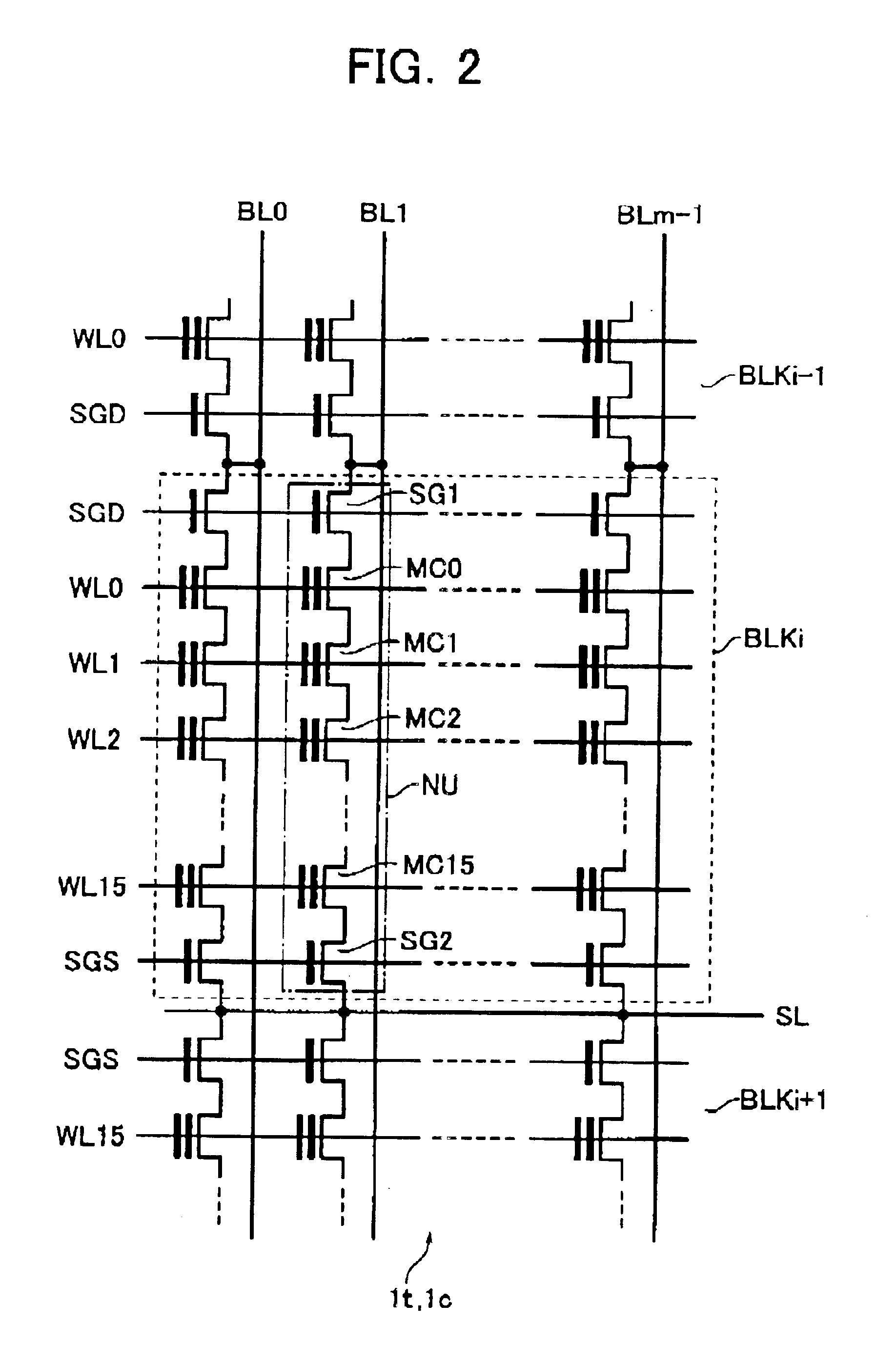Non-volatile semiconductor memory device reading and writing multi-value data from and into pair-cells
a non-volatile, memory device technology, applied in the direction of color television, instruments, television systems, etc., can solve the problems of large power consumption, small power consumption of conventional nand-type flash memory,
- Summary
- Abstract
- Description
- Claims
- Application Information
AI Technical Summary
Benefits of technology
Problems solved by technology
Method used
Image
Examples
Embodiment Construction
[0037]Referring to the drawings, a NAND-type flash memory according to an embodiment will be described bellow. In the flash memory of this embodiment, a combination of a multi-value data storage scheme and a pair-cell scheme, in which two cells constitute a pair-cell for storing complementary data therein, is used. By use of the above-described combination of two schemes, it is able to achieve a NAND memory system with a high-speed performance while bit density thereof is maintained at a high level. That is, in the pair-cell scheme, data storage is performed by one-bit / two-cell. In this case, however, perform for example 4-value data storage for a pair-cell, and it results in a storage manner of one-bit / one-cell. Further, perform data determination by comparing two cell currents for each pair-cell, it becomes to be able to precisely read out data with a high-speed performance even if the cell current is small.
[0038]It should be appreciated that this invention may be generally applie...
PUM
 Login to View More
Login to View More Abstract
Description
Claims
Application Information
 Login to View More
Login to View More - R&D
- Intellectual Property
- Life Sciences
- Materials
- Tech Scout
- Unparalleled Data Quality
- Higher Quality Content
- 60% Fewer Hallucinations
Browse by: Latest US Patents, China's latest patents, Technical Efficacy Thesaurus, Application Domain, Technology Topic, Popular Technical Reports.
© 2025 PatSnap. All rights reserved.Legal|Privacy policy|Modern Slavery Act Transparency Statement|Sitemap|About US| Contact US: help@patsnap.com



